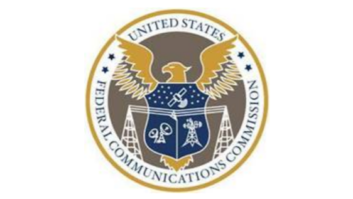The MusicFirst Coalition and the Future of Music Coalition want the Federal Communications Commission to retain its local radio station ownership caps and subcaps, at least for FM stations.
“These rules remain necessary to promote diversity, competition and localism in communities throughout the country,” they told the commission.
They noted that a proposal from the National Association of Broadcasters would allow common ownership of up to eight commercial FM stations in the 75 largest U.S. markets.
Commenting in the FCC’s long-drawn-out 2018 quadrennial review process, the two groups, which advocate for music creators, wrote: “What we have observed at commercial FM radio in recent years confirms our long-held conviction that prior to rulemaking, the FCC should commission its own analysis — beyond just macroeconomics — incorporating cultural, artistic, labor and other public interest concerns. Such analysis must authentically center on core policy principles of diversity, competition and localism.”
The groups say that the proposal from the NAB to ease some local caps and eliminate others “raises the frightening possibility that a single company might be allowed to own every commercial radio station in many geographic markets, accelerating many of the harms already described by civil rights groups, unions and media reformers.
“Having failed to establish consensus for their proposal even among struggling commercial FM station owners,” the coalitions continued, “they now desperately point solely to marketplace challenges facing the radio industry as justification for further drastic ownership deregulation while dodging accountability for their own anti-competitive actions and the impacts of their preferred deregulatory policies.”
Further ownership consolidation, they said, “is not the answer to terrestrial radio’s competition woes.” They dismissed NAB’s argument that caps are limiting ownership unduly. “In fact, the few AM/FM owners who are currently hitting the LRSO Caps appear to be bouncing back nicely. Permanent ownership deregulation is not the right remedy.”
[Related: “NAB Lays Out Precarious Financial Position of Radio”]
They want to FCC to “chart a different course … rather than assenting to calls to further weaken important public interest protections on the flimsiest of justifications.” It wants the commission to define markets differently, study the impact of past policy decisions on racial equity, and collect better data about what is happening in the marketplace “with respect to listeners, broadcast owners and content creators.”
So they asked the FCC to retain current maximums on the number of FM stations that an entity can own in a market, as well as the AM/FM subcap. They didn’t take a position on whether it should ease the number of AM stations that one entity can own in a market.
“We also call upon the commission to conduct its own meaningful studies about the effects of deregulation of commercial FM ownership on diversity, localism and both intramodal and intermodal competition for use in its upcoming 2022 Quadrennial Review. Such studies should include analysis of effects on the public interest of the elimination of the Main Studio Rule, with an eye toward determining whether the Main Studio Rule should be reinstated in the public interest.”
Founding members of MusicFirst include the Recording Industry Association of America and SoundExchange, among other advocacy groups. FMC is a nonprofit that advocates for artist compensation.
The NAB pushed back Tuesday in a statement from Senior VP Communications Ann Marie Cumming: “It is ironic that musicFIRST characterizes the entire radio industry as conglomerates owned by the six largest radio groups when 87 percent of stations are not. Moreover, the market power of the music industry itself only underscores the competitive imbalance that broadcasters face every day. The fact is, the market cap of any one of three major music groups dwarfs that of the entire commercial radio industry combined. Yet as these record labels’ earnings skyrocket, they continue to plead poverty and resort to desperate advocacy tactics to impose a new music royalty on local radio stations.”





